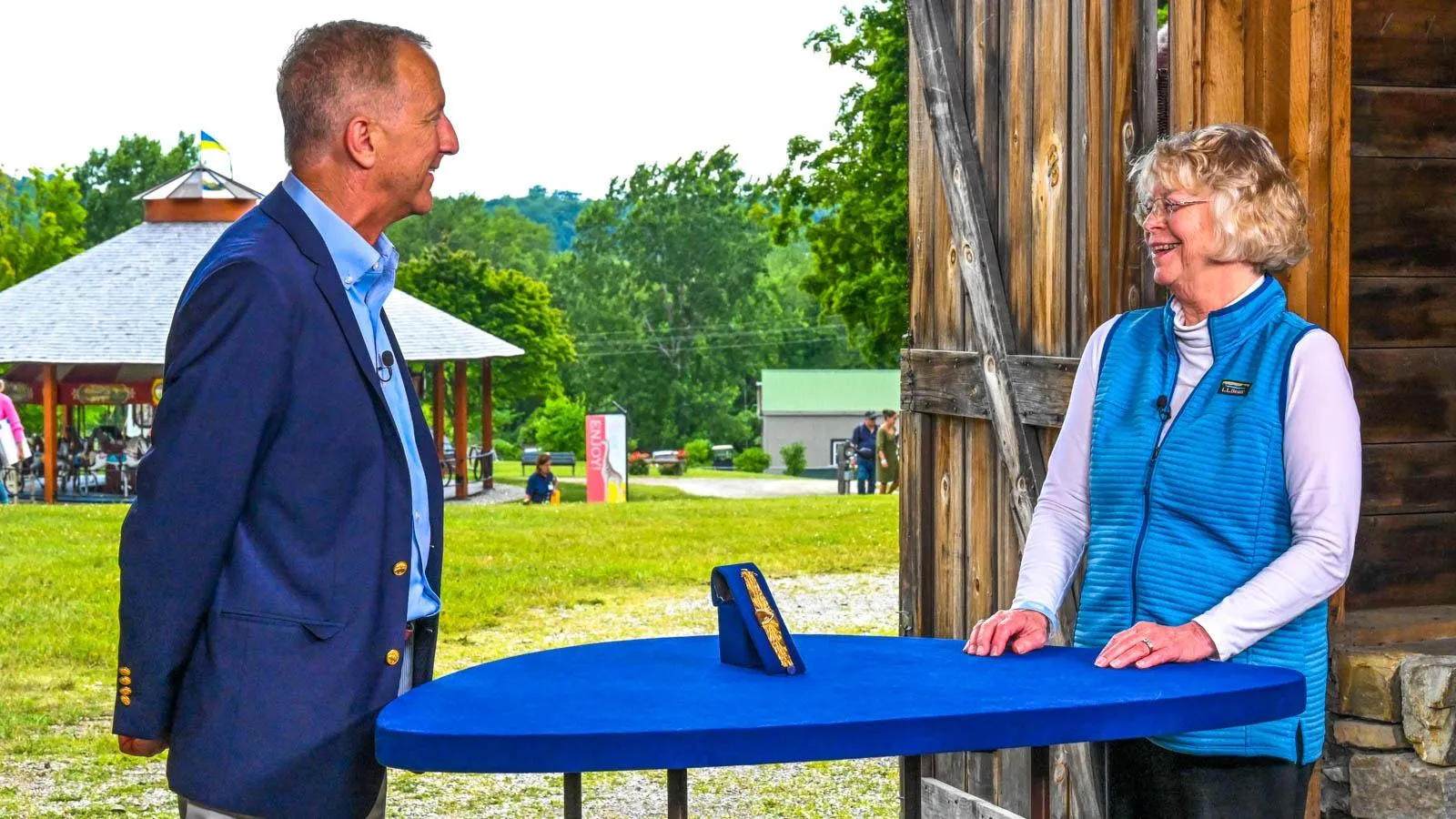GUEST: I brought a painting that I bought the summer of 2019 at an auction. This family had occupied this property since 1860.
APPRAISER: Oh, my!
GUEST: So we knew there was going to be some old stuff. It was kind of a stormy day, and I think they didn't have as many people show up, maybe, as they wanted.
APPRAISER: Mm-hmm.
GUEST: I saw this and it just, I just really liked it.
APPRAISER: Yeah.
GUEST: And I lived in Switzerland for a short time, and it reminded me of my time there.
APPRAISER: Yes.
GUEST: And I had the perfect spot for it in my center hall of my home. The auctioneer started the bidding at five dollars, and no one bid. And so he lowered it to $2.50. So I bid, and then that was it.
APPRAISER: Nobody else bid after $2.50.
GUEST: Nobody else bid.
APPRAISER: Oh, my goodness. Do you know who the artist is?
GUEST: No-- I, I mean, I saw the letters on the bottom.
APPRAISER: Yep.
GUEST: But I just never investigated it.
APPRAISER: Yeah, well, it's a little hard to read, but it's by an artist named Edgar Payne, P-A-Y-N-E. Edgar Payne was born in 1883 and died in 1947. California artist.
GUEST: Oh!
APPRAISER: And he was a leading member of the California Impressionist artists of the early 20th century. Very significant group of painters who broke away from New York, uh, Pennsylvania, East Coast, and went out to California. And California, 100 years ago, you can imagine, it's pretty remote. (chuckles)
GUEST: Yeah.
APPRAISER: And they painted pretty much outdoors. They painted en plein air. This is probably the Sierra Nevada Mountains. It's an oil painting, and painted on Masonite. And as we can look very closely, you can see some of the Masonite still exposed. It looks like brown highlights in the painting. In fact, it's the Masonite that's just, comes right through. Very thick impasto. I mean, can you see the paint on it? My goodness, it's like ice cream, right?
GUEST: Yeah. Yeah.
APPRAISER: It's just beautiful. And what's particularly nice about this is that it has a lake in front of it, and they've got the reflection off the lake. And Edgar Payne painted so often in the Sierra Nevadas that they named a lake after him.
GUEST: Oh!
APPRAISER: So this may be Payne Lake-- I don't know that for certain. I think that compositionally, the way you have the horizon line here of the lake blending into the beginning of the mountain, you go up to the mountain, you have this wonderful skyline, the blue in the sky is just spectacular, robin's egg blue. The gradations of the white from the snow to the different blues and grays. And even in the forest down here, you get to see some yellows in the trees. So top to bottom, I think it's a really spectacular little gem. Do you have an idea of what the value might be?
GUEST: No. When I first looked at it, I noticed that the frame kind of reminded me of something from the '20s.
APPRAISER: Mm-hmm?
GUEST: And no, I really don't know the value.
APPRAISER: Probably it's painted in the '20s, is my guess. That's when he was really in his heyday. A painting of this size today, at auction, would be worth somewhere between $10,000 and $20,000.
GUEST: Ooh, nice.
(both chuckle)
GUEST: So that was a good investment.
APPRAISER: For $2.50, I think so. (laughs) I think you better keep hitting these auctions, by all means.
GUEST: Yeah.
APPRAISER: He did larger, monumental paintings.
GUEST: Uh-huh.
APPRAISER: And his bigger paintings can bring six figures.





